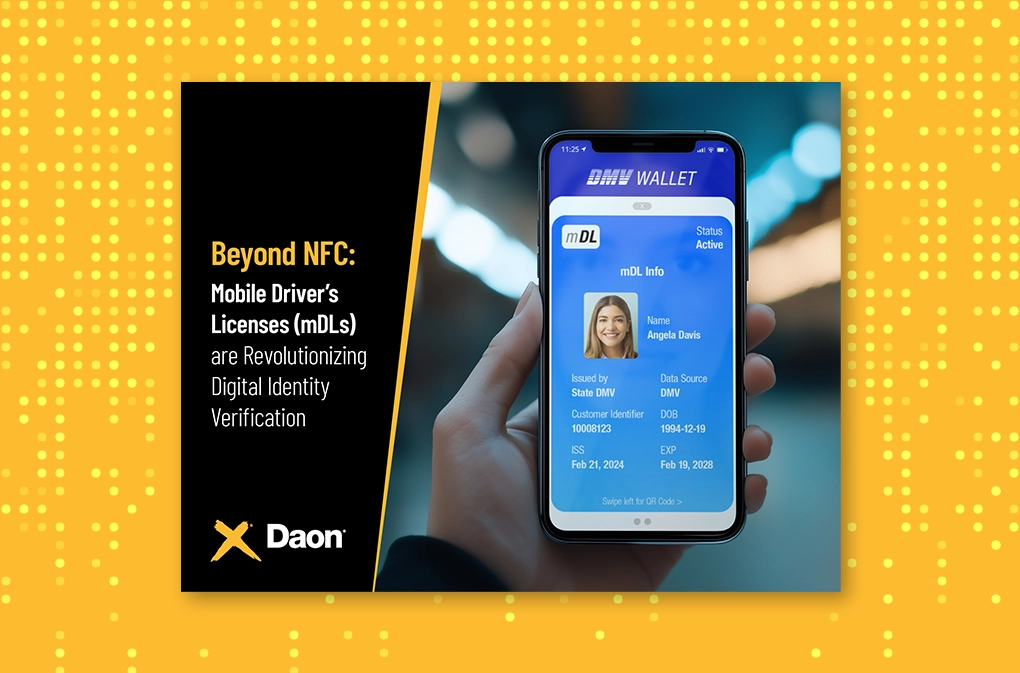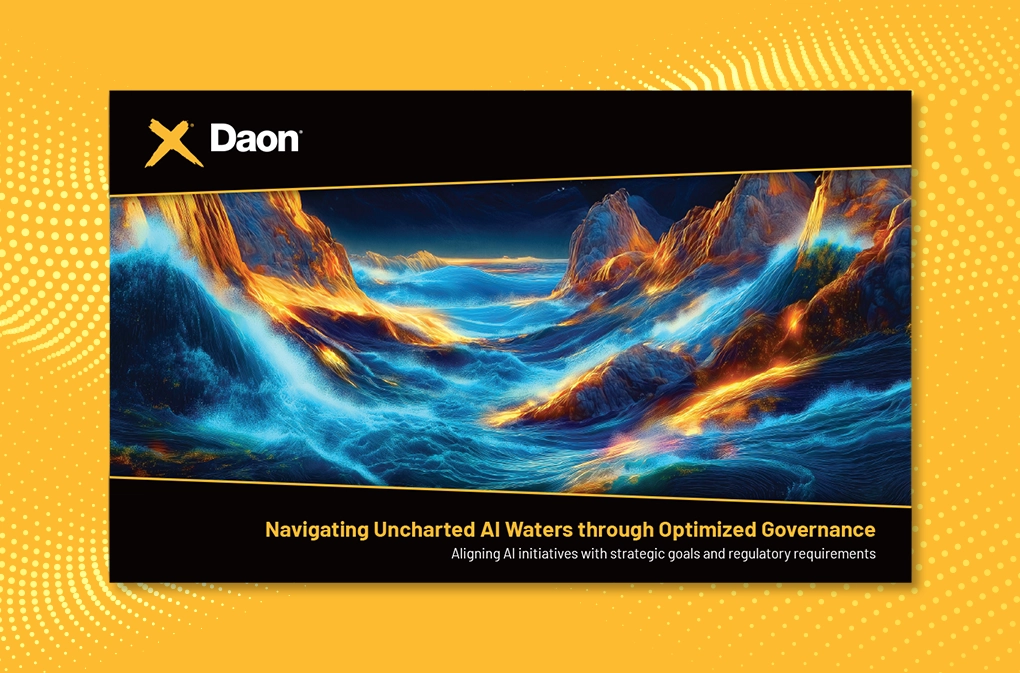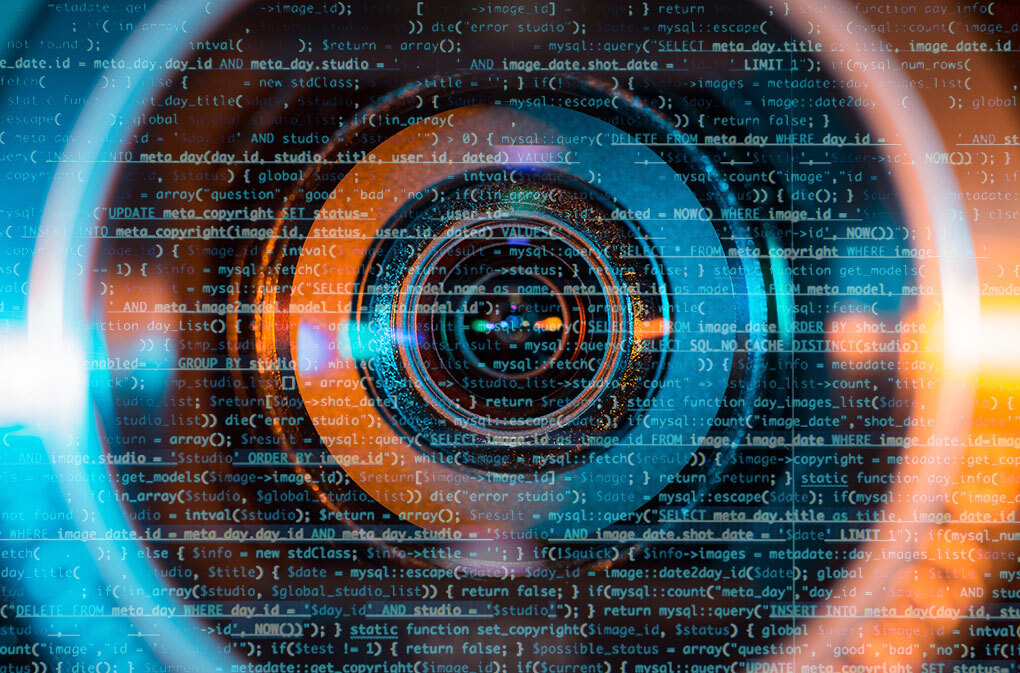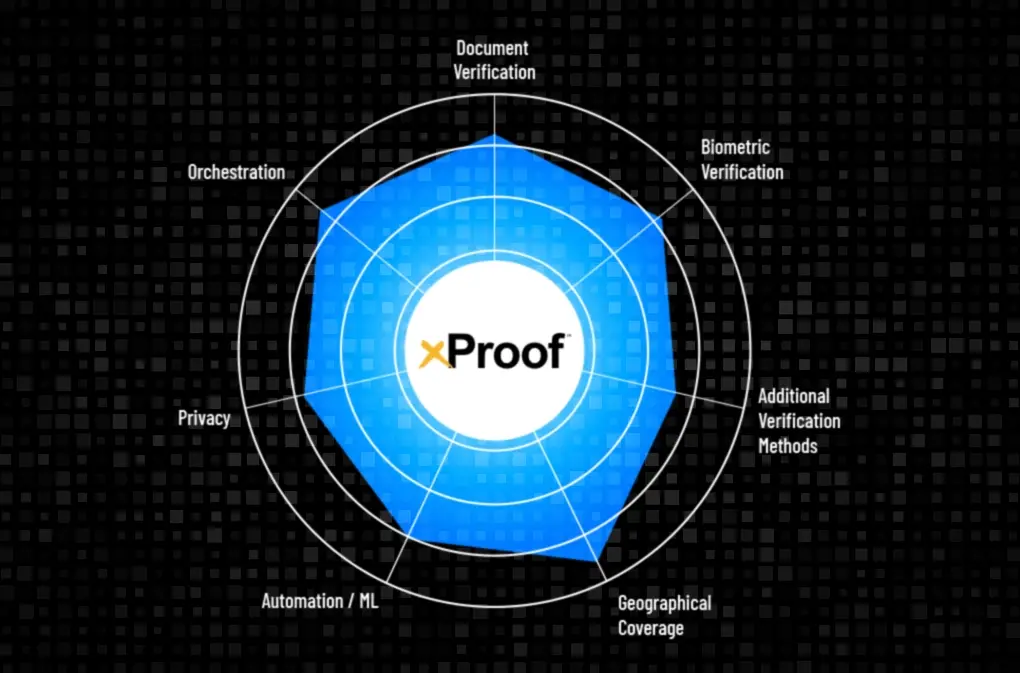4 Trends That Are Redefining Digital Identity and Security in 2025
The latest advancements in digital identity verification technology could render physical IDs, a standard for personal identification since the 1940s, a thing of the past. That’s just one of the indications why this year is poised to bring profound transformation within the world of digital identity. Organizations across various industries are harnessing innovative technologies in an effort to outpace the ever-evolving tactics of hackers and fraudsters.
Recognizing this evolution and the importance of equipping readers with key insights, the senior executive team at Daon has identified some of 2025’s most critical trends shaping the future of secure identity verification. From combating the fast-accelerating threat of deepfake attacks to fortifying contact centers against AI-wielding fraudsters, leveraging digital wallets for many useful purposes, including government and travel services, and utilizing the potential of mobile driver’s licenses in identity workflows, these advancements aim to protect individuals, businesses, and institutions while improving accessibility and user experience.
Delve deeper into digital identity trends for 2025 and these pivotal developments to uncover which proactive strategies and cutting-edge solutions are ready to redefine the digital identity ecosystem.
1. Safeguarding Digital Identities Against Deepfake Attacks
Deepfake technology continues to evolve at an alarming pace, prompting governments and regulatory bodies to implement new measures hoping to curtail its impact. Rapid advancements in artificial intelligence have made creating synthetic media easier than ever while at the same time heightening the threat to digital identity. Generative AI is projected to dramatically increase fraud risks, with potential losses reaching up to $40 billion by 2027—impacting banks, their customers, and the broader financial landscape.
The EU AI Act now categorizes deepfake technology as ‘high risk’ and mandates transparency for AI-generated content. Simultaneously, the U.S. National Deepfake Task Force is developing standards to identify and mitigate synthetic media threats. These initiatives are vital steps in setting boundaries for responsible AI use and addressing the societal and ethical dilemmas posed by deepfakes.
The rapid evolution of generative AI, fueled by advancements in machine learning and tools like Midjourney, ChatGPT, and ElevenLabs, has democratized the creation of hyper-realistic media. This accessibility has lowered technical barriers for malicious actors, enabling the proliferation of deepfakes that exploit public trust.
According to Deloitte’s 2024 survey, 26% of executives reported encountering deepfake-related fraud within the past year, with most incidents targeting financial transactions and sensitive data. More than half of executives (51.6%), including those in the C-suite, expect a rise in deepfake attacks, presenting growing challenges for businesses and governments to stay ahead of increasingly sophisticated schemes.
Biometric authentication systems, once considered the gold standard in identity verification, are also under siege. Advanced deepfake technologies can fool facial recognition and voice verification systems, enabling unauthorized access to accounts or systems. Ethical concerns around biometric data usage, highlighted by regulations like the EU’s General Data Protection Regulation (GDPR), stress the importance of informed consent, data minimization, and secure handling of sensitive information.
Another troubling development linked to deepfake fraud is the rise of identity farming on the dark web. Automated scraping of publicly available data, including social media videos and biometric credentials, feeds identity farms. Using generative adversarial networks (GANs), these datasets create lifelike synthetic identities to employ fraud at scale. Organizations must deploy robust defenses, such as federated identity models and decentralized credential storage, to combat these threats.
Fighting deepfakes effectively requires a multi-faceted approach. AI itself plays a critical role in developing detection systems to identify synthetic media. GANs can stress-test detection algorithms, refining them to spot subtle inconsistencies, such as unnatural pixel patterns, temporal mismatches, or audio distortions. Real-time anomaly detection systems powered by AI can monitor digital interactions and flag suspicious activities.
Compliance with emerging legislation, like the EU AI Act or the FTC’s AI accountability guidelines, is crucial for ensuring defense strategies align with legal and ethical standards. These frameworks emphasize transparency, fairness, and accountability, guiding organizations in responsible AI development.
Currently, organizations can adopt several impactful measures:
- Deepfake Detection Tools: AI-driven solutions analyze anomalies in audio and video to verify authenticity in real time. Detection algorithms scrutinize irregularities like unnatural shadowing, lip synchronization issues, or unique encoding noise left by generative AI models.
- Enhanced Biometric Authentication: Combining multiple biometric modalities, such as facial recognition, voice analysis, and behavioral metrics, creates a more robust security framework that is harder to bypass.
- Continuous Identity Verification: Systems that verify identity throughout an interaction—not just at entry—align with zero-trust principles, continuously reauthenticating users to mitigate fraud risks.
- Liveness Detection: Tools that distinguish human activity from synthetic sources enhance defenses against deepfake attacks. These systems analyze subtle indicators, such as micro-movements, light diffusion across skin textures, and audio harmonic frequencies, to differentiate between real and synthetic media.
Ultimately, the fight against deepfakes is not just a technological battle but also a question of trust. Legislation and ethical guidelines play a critical role in combatting deepfakes. By aligning strategies with initiatives like the EU AI Act or the U.S. National Deepfake Task Force, organizations can demonstrate a commitment to responsible innovation. Addressing deepfake threats at both technical and policy levels ensures a holistic approach to safeguarding digital identities.
In 2025, digital identity trends show that businesses must invest in advanced tools and strategies to protect their customers and ensure secure digital interactions. Fighting AI with AI is no longer optional—it is essential for maintaining the integrity of digital identities. By collaborating with technology providers to adopt advancements like biometric anti-spoofing, quantum-resistant encryption, and decentralized verification systems, companies can position themselves as leaders in digital identity protection.
2. The Growing Threat of Deepfakes in Contact Centers
As the digital threats that businesses and their customers face continue to grow in complexity, contact centers remain a critical point of vulnerability for many organizations. Deepfake technology enables fraudsters to easily simulate human voices with startling accuracy. The accessibility of these advanced tools means that businesses must stay vigilant and proactive in securing their contact centers.
According to the Aite Group, 61% of organizational fraud losses can be traced back to contact centers. The Bank Administration Institute reports that the average loss per fraudulent call is $1,653. Combined with the fact that contact centers are responsible for more fraud than any other channel, it is clear why addressing this issue has become a priority. Businesses can no longer afford to rely on outdated authentication methods like knowledge-based authentication (KBA), which rejects up to 30% of legitimate customers while allowing 60% of fraudsters to slip through, according to Gartner. By adopting deepfake detection tools, biometric authentication, and Identity Continuity strategies, organizations can significantly reduce fraud, enhance customer trust, and improve operational efficiency.
Biometric Authentication vs. Deepfakes
One of the most promising solutions is the integration of biometric voice authentication systems. Unlike traditional methods, biometric authentication relies on unique vocal characteristics to verify identity, providing a higher level of accuracy and security.
Active and passive voice biometrics offer distinct advantages. Active biometrics require a customer to speak a specific phrase for authentication, while passive systems operate seamlessly in the background during a natural conversation. Passive voice authentication is particularly robust, improving in accuracy as it collects more speech data. This frictionless approach not only enhances security but also improves customer experience by eliminating the need for repetitive authentication steps.
Fighting Deepfakes with Advanced Detection Tools
While voice biometrics provide formidable security, they are not immune to the challenges posed by deepfake technology. By employing publicly available voice samples or minimal audio data, attackers can create deepfake audio capable of mimicking an individual’s vocal characteristics with high accuracy. This poses significant security risks as voice authentication systems may struggle to differentiate between genuine and synthetic voices.
To combat synthetic audio attacks, advanced liveness detection techniques and AI-driven tools like Daon’s xDeTECH are becoming essential. These tools analyze audio feeds in real time to determine whether the source is human or synthetic, providing an additional layer of protection. Unlike traditional systems, applications like xDeTECH do not rely on biometrics or personally identifiable information (PII), ensuring privacy while safeguarding against deepfake threats.
Equipping Contact Centers for the Future
Implementing advanced contact center authentication solutions can have a transformative impact on contact center operations. For example, Daon’s xVoice application helped a large U.S.-based financial services institution save 33,000 minutes of call time within just three months. This resulted in a 50% reduction in customer wait times and call transfers. More importantly, the organization reported zero evidence of fraud through its mobile channel after adopting Daon’s product suite.
Reducing average call handling times by 25 to 45 seconds and enabling more calls to be completed within the Interactive Voice Response (IVR) system translates to substantial cost savings and improved efficiency. Shorter wait times and fewer transfers lead to higher customer satisfaction, while agents can focus on complex cases that truly require human expertise.
Looking ahead to the upcoming year and beyond, modern contact centers must embrace advanced technologies to counteract the rising risk of fraud. We can expect these technologies to become industry standards, transforming call centers from weak links into fortified nodes of customer engagement. Innovative solutions like Daon’s xVoice and xDeTECH allow organizations to take meaningful steps toward creating more secure and reliable contact centers.
3. How Digital Wallets Could Transform Government and Travel Services
From smartphone apps for shopping and managing finances to streaming entertainment, the global population is embracing a digital-first reality. In 2024, Pew Research Center reported that 91% of Americans owned smartphones, spending an average of over four hours daily on their screens. Globally, two-thirds of adults now make or receive digital payments, according to the World Bank. Yet, while individuals adapt to this digital age, many government organizations remain anchored in outdated processes, struggling to meet the expectations of their constituents.
Citizens frequently face barriers such as paper-based applications and cumbersome, obsolete government websites. The result? In the United States, federal digital services recorded a historic low in satisfaction, as reported by the Information Technology and Innovation Foundation. These challenges extend to state and local governments, where fragmented systems and legacy infrastructure further complicate interactions with citizens.
In this context, digital wallets emerge as a transformative opportunity to reimagine how governments interact with their citizens. When implemented properly, digital wallets can transcend their role as payment tools, becoming secure, unified gateways for streamlined interactions between citizens and public institutions. Enhanced with digital document verification and government-to-citizen functionalities, they offer a future where public services are more efficient, accessible, and inclusive.
Leveraging the Potential of Digital Wallets in Governance
In government services, a digital wallet represents much more than a payment repository. With the right infrastructure, it becomes a cornerstone of modern public administration, offering capabilities such as:
- Seamless Identity Authentication: Fast, secure access to services and digital documents, eliminating repetitive logins and manual credential entry.
- Credential and License Storage: A centralized location for critical documents like driver’s licenses, voter registrations, and professional certifications.
- Effortless Financial Transactions: Support for tax payments, disbursement of benefits, and other financial exchanges.
- Real-Time Communication: Two-way interactions for renewing licenses, paying fees, or receiving emergency alerts.
Governments around the world are beginning to explore the potential of digital wallets, but progress is uneven. Siloed data systems, outmoded IT infrastructure, and limited budgets remain significant hurdles. Nevertheless, ongoing innovation presents an opportunity to rethink public service delivery.
Improving the Travel Experience
In addition to transforming public services, digital wallets hold immense potential to revolutionize global travel. By securely storing digital passports, boarding passes, and other travel credentials, these wallets offer unparalleled convenience. Travelers can pass through biometric scanners at airports, verifying their identity in seconds without fumbling for physical documents.
Some systems integrate biometric verification directly into digital wallets, enabling authentication via a fingerprint or face scan. This creates a seamless travel experience, extending beyond airports to hotels, car rentals, and border crossings. For governments, these innovations enhance security by reducing reliance on paper documents, which are more prone to fraud.
These capabilities not only streamline the traveler’s journey but also empower governments with tools for combating identity fraud and improving operational efficiency. By adopting digital wallets, the travel industry and the public sector alike can pave the way for more secure, frictionless interactions across borders.
Envisioning the Future
Beyond streamlining existing services, this technology has the potential to bridge gaps in financial inclusion, connect citizens to critical resources, simplify travel, and empower more dynamic, responsive governance.
By integrating digital wallets into public administration, governments can foster trust, enhance satisfaction, and future-proof their services. These tools could also vastly improve the efficiency of global mobility, reducing friction in cross-border interactions and supporting initiatives as ambitious as digital democracy, enabling secure online voting and transforming civic participation.
The path forward requires innovation, collaboration, and a willingness to invest in transformative technologies. Public-private partnerships, strategic planning, and an emphasis on interoperability will be key to overcoming barriers and unlocking the full potential of digital wallets.
As the digital age accelerates, governments must seize the moment to redefine their relationships with citizens. Digital wallets offer a blueprint for a more connected, equitable, and dynamic future—one that leads to seamless travel, access to services, and global collaboration.
4. Exploring the Potential of Mobile Driver’s Licenses
Digital wallets have revolutionized the way we store and manage sensitive information, allowing secure and convenient access to payment methods, tickets, and more. As this technology gains traction, one of its most promising applications is the integration of mobile driver’s licenses (mDLs), which offer a modern approach to identity verification.
Despite their widespread use, traditional ID cards pose significant challenges and inconveniences for individuals, businesses, and government agencies during the identity verification process. Vulnerable to theft, forgery, and manipulation, physical documents are becoming more susceptible to counterfeiting, amplifying the need for secure alternatives. In 2023, identity theft and fraud caused $10.3 billion in financial losses in the U.S., with government documents and benefits fraud being the most common. Such attacks have affected 1 in 5 Americans, with median losses of $500 per victim.
As AI and machine-learning technologies continue to advance, bad actors are exploiting these tools to clone or manipulate documents, making fraud detection more difficult than ever before.
That’s why, over the next few years, mobile driver’s licenses are expected to dramatically improve how we verify identity. By allowing users to share only the data necessary for a given transaction, mDLs enhance privacy and minimize the risks associated with the over-disclosure of personal information. Stored securely on users’ smartphones, they address various pitfalls associated with traditional ID cards, offering a secure, convenient, and highly adaptable solution for both online and in-person use.
What does Identity Verification look like with mDLs?
Built on Open Standards set by the International Standards Organization (ISO), mDLs ensure compatibility across jurisdictions, making them scalable for widespread use. Governments issue mDLs using the same rigorous proofing processes as physical IDs, but with advanced cryptographic security features that drastically reduce the risk of fraud.
Offering improved security and convenience, mDLs integrate seamlessly with device biometrics for user verification. Mobile driver’s licenses prioritize privacy through features like selective disclosure, enabling users to share only necessary information while maintaining an audit trail. This design allows for the safeguarding of personal data and fosters trust in digital identity systems.
The Expanding Applications and Uses for mDLs
As digital transactions become more prevalent, the recent release of ISO/IEC 18013-7 has laid the groundwork for the secure acceptance of mDLs online. This international standard establishes protocols for verifying identity while maintaining data security and user consent, allowing mDLs to be used confidently across industries and borders. Establishing interoperability between systems facilitates a seamless and reliable user experience, permitting businesses and institutions to integrate mDLs into their digital workflows with greater security and efficiency.
The versatility of mDLs opens the door to numerous use cases. For age-restricted purchases, they provide a discreet and efficient method to verify age without exposing additional personal details. In healthcare, mDLs streamline processes such as picking up prescriptions or verifying insurance details. Mobile Driver’s Licenses also enable seamless authentication for e-commerce and financial transactions, fostering secure digital interactions.
In connected ecosystems, mDLs can act as secure keys for accessing vehicles or other digital services. These applications enhance user experience and improve reliability and functionality across industries.
Accelerating Adoption and Global Impact
The adoption of mDLs is growing rapidly, both in the U.S. and globally. In the U.S., 14 states have certified ISO-compliant mDLs, covering 46% of the population. Approximately 5 million mDLs have already been issued for applications ranging from TSA checkpoints to government services. Globally, the Asia-Pacific region leads adoption, accounting for 72% of the market. In January, the UK and Ireland both announced plans to roll out mobile driver’s license programs this year. By next year, an estimated 15% of adults worldwide—850 million people—will have a mobile ID.
Technology giants like Apple and Google are integrating mDL capabilities into their platforms, further accelerating adoption and driving innovation. This widespread uptake emphasizes the growing importance of mDLs in digital identity ecosystems. As adoption grows, organizations that embrace mDL technology will gain a competitive edge by offering more seamless, secure, and user-centric identity solutions, building trust, and meeting evolving consumer expectations.
Shaping the Future of Digital Identity
Through partnerships with companies like MATTr and Dock Labs, Daon is pioneering mDL technology in America, Europe, and Asia. By unifying verified data from government-issued digital IDs, bank credentials, and other sources, Daon is paving the way for reusable, verifiable credentials that will streamline identity verification and facilitate secure, seamless access across interconnected systems.
As adoption accelerates in 2025, mDLs are set to redefine identity verification, offering a more secure and inclusive solution for individuals, businesses, and governments alike. In the future, mDLs will play a crucial role in ensuring Identity Continuity, enabling individuals to maintain a secure and adaptable digital footprint. By addressing the limitations of traditional ID cards, mDLs offer an innovative approach that aligns with the growing need for seamless and secure identity verification across both digital and physical environments.
Navigating the Next Frontier of Digital Identity
In 2025, trends in digital identity and security will continue to experience a pivotal shift, as groundbreaking innovations redefine protection, accessibility, and convenience—while also introducing new challenges that demand vigilance. Organizations that embrace AI-powered security solutions, biometric advancements, and decentralized identity frameworks will strengthen fraud prevention while also improving user experience and operational efficiency. The future of digital identity is being built now—and businesses, governments, and consumers alike must collaborate to build a system that works for everyone.
If your organization is ready to optimize security, simplify identity verification, and improve the user experience, Daon is here to help you navigate the next frontier of digital identity. Contact us today to learn more.












